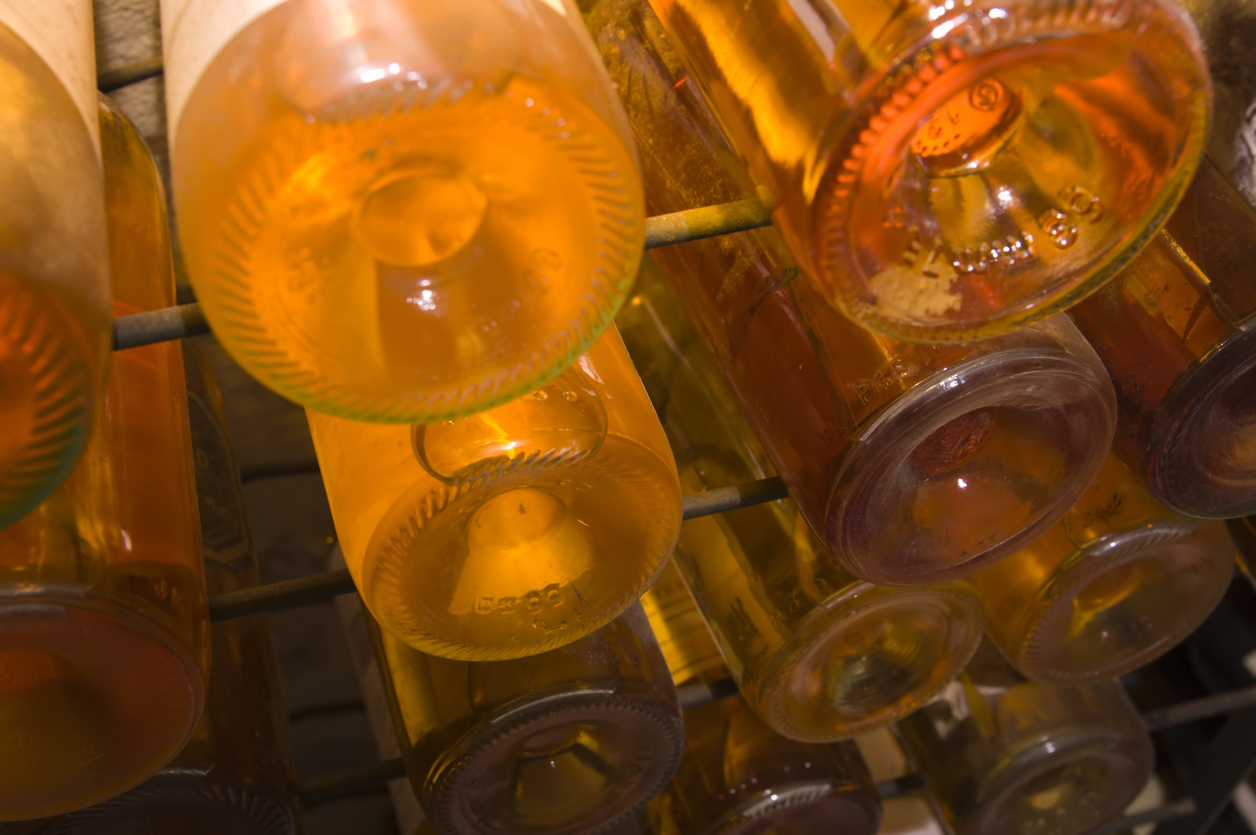
Sauternes is the famous sweet wine from Bordeaux, France. As well as being a type of wine, it is also the name of the region from which it is produced. This tiny appellation, located about 40 miles south of the city of Bordeaux, produces some of the most long-lived and collectible dessert wines in the world.
Although not all Sauternes is out of reach for the average wine drinker, top Sauternes from a good year can easily run into the thousands for a half-bottle. But don’t despair—you won’t have to mortgage your house to enjoy a decent Sauternes. Purchased in its youth, you can easily find a good half-bottle in the $20 range, and if it’s a good vintage from a good producer, it can be a reliable investment.
What is Sauternes Wine?
Sauternes is usually a sweet or semi-sweet white wine made chiefly from semillon with the sauvignon blanc added to boost acidity. Muscadelle and sauvignon gris are also allowed.
The color of the wine ranges from a pale straw color to deep amber with age, and its nose is typically replete with marmalade, honeysuckle, orange blossom, and stone fruit, especially apricot. The palate is rich, sweet, and unctuous, the best examples showing great concentration and a finish that continues to unfold on the palate.
Noble Rot
But what really makes Sauternes so special and unique is a type of mold that grows on the grapes called botrytis cinerea, also referred to as noble rot or just plain botrytis. Botrytis causes the grapes to rot—and quite frankly, it looks as dreadful as it sounds—but the result is nothing short of magical.
Botrytis needs ideal conditions to become noble rot. Morning mists and humidity followed by sunny, dry afternoons provide the perfect environment for botrytis to thrive. Should the afternoon sun not dry the grapes, it can become grey rot, which will destroy the crop entirely. So, the fact that botrytis thrives as noble rot in this tiny region is a bit of a miracle in itself.
Over the course of a few weeks, this humid-to-dry process gradually reduces the water inside the grapes, concentrating their sugars and flavors into an incredibly rich juice.
Sauternes Harvest
At harvest time, pickers go out in “tries successives” (pronounced ‘trees,’ meaning multiple passes through the vineyard), picking only those berries affected by noble rot. It sometimes takes several “tries” over several days or weeks to harvest everything, and timing is everything. Left too long, botrytis may turn to grey rot. Picked too early, they will not achieve peak flavors or sugars.
It is a long, arduous process with no guarantees, which only adds to the high cost of producing the wine. Once picked, they are fermented, pressed, and then aged in oak barrels anywhere from 18 to 36 months before being bottled and released for sale.
What to Pair with Sauternes
Sauternes pairs remarkably well with chocolate, crème brulée, blue cheese, and most pungent cheeses. The classic French pairing for Sauternes is foie gras, a type of goose or duck liver pate, either served pan-seared or cold, au torchon, with a dollop of marmalade or fruit compote.





